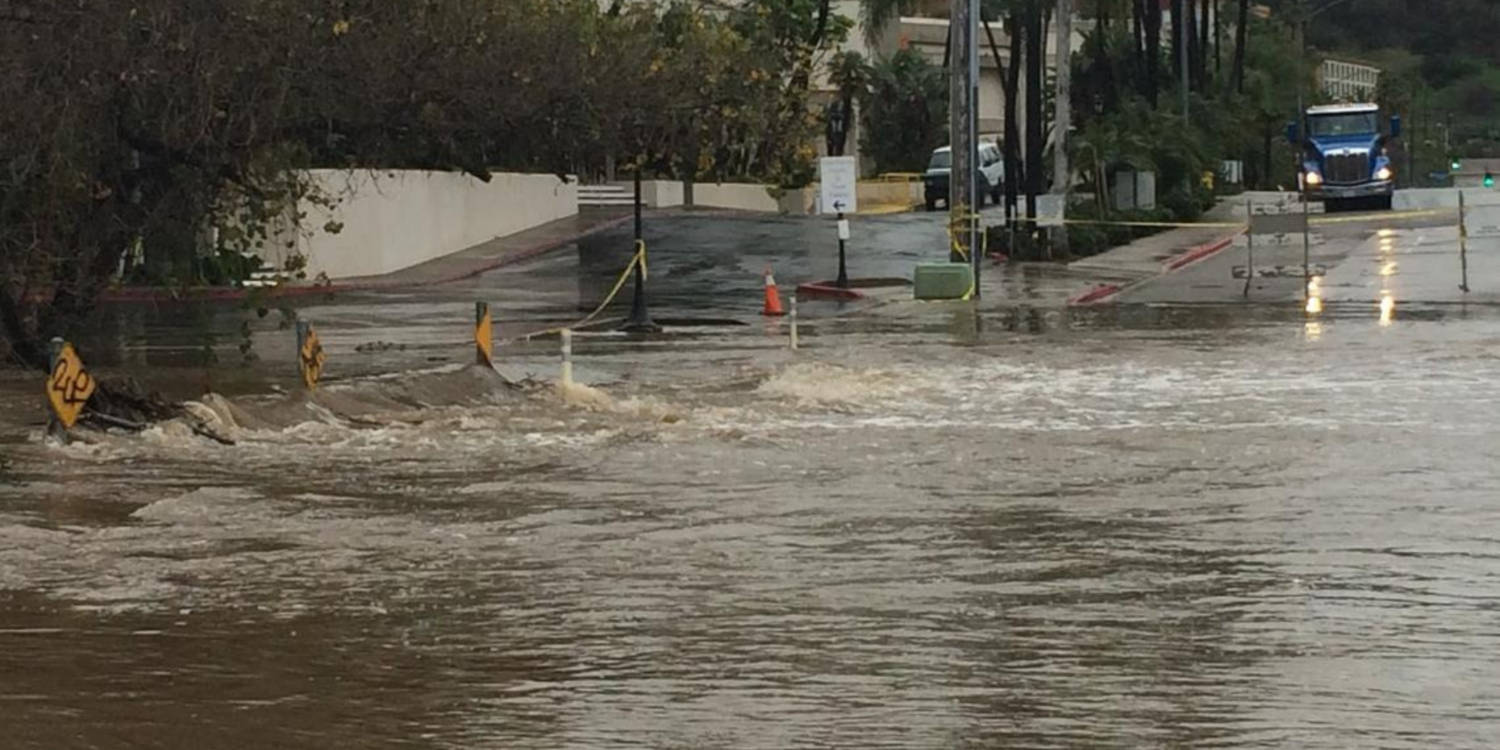
California is getting hit with its second atmospheric river in a week, and California Coastkeeper Alliance is reflecting on how the state can better prepare for wild swings between drought and flood – a ‘new normal’ that we can expect to worsen with climate change.
As the statewide experts on stormwater, we would be remiss if we didn’t discuss a majorly underutilized strategy: stormwater capture. Stormwater capture is the practice of slowing down stormwater runoff in urban communities to allow it to percolate into the ground. This process creates additional water supply, improves water quality, and provides the community with greenspace.
While capturing stormwater seems like a no-brainer to prevent floods and boost our water supply during drought years, the state has actually created barriers to prioritizing stormwater capture. For example, a California Constitutional provision prevents local communities from raising the funding necessary to manage their stormwater problem and build stormwater capture as a solution. Commonly referred to as Proposition 218, the state needs to reform the provision to recognize stormwater as an exempted utility similar to drinking water, sewer service, and trash collection. Exempting stormwater from Proposition 218 would provide local communities the ability to raise sufficient funding to address stormwater pollution in the community and build stormwater capture to prevent our waterways from flooding while providing a water supply.
California also needs to start holding all stormwater polluters accountable to capture and infiltrate their stormwater discharges. Currently, commercial property is unregulated under California’s stormwater program, leaving an unfair playing field for other land uses like industrial and municipal properties that are responsible for cleaning up their stormwater discharges. Commercial sites amass significant pollution from every car that uses their parking lots, including heavy metals (copper, zinc, lead), oil, and grease. Commercial properties throughout the state also have a meaningful opportunity to capture stormwater given the size of their parking lots. It is time for California to regulate commercial property as it does industrial and municipal properties, and incentivize them to work collaboratively with local governments to build regional stormwater capture projects.
Los Angeles Waterkeeper has successfully advocated for the Los Angeles Regional Water Board to develop a Commercial, Institutional, and Industrial (CII) stormwater permit that will incentivize stormwater capture as the primary method towards achieving clean water compliance. In Los Angeles, modeled results indicate that, out of all urban stormwater sources, commercial sites represent 25.6% of the total land use in the watershed, but they contribute at least 88% of zinc loadings and 84% of copper loadings in the watershed. Commercial sites alone contribute four times the pollutant loadingsthat the watershed would receive under natural conditions. The new Los Angeles CII Permit will encourage commercial properties to either pay the local community to build a joint stormwater capture project or the property must build their own stormwater capture project on-site. Both options will encourage additional stormwater capture, preventing our urban rivers from flooding, while providing Los Angeles with future water supplies. The state needs to follow suit and develop a statewide CII Stormwater Permit to incentivize commercial proprieties to capture stormwater in all of our urban communities.
Stormwater capture is just one way to better prepare California for drought and flooding. Read part one and part three of our “Drought to Flood” series to learn more.

Executive Director Sean Bothwell leads CCKA’s initiatives to fight for swimmable, fishable, and drinkable waters for all Californians.



